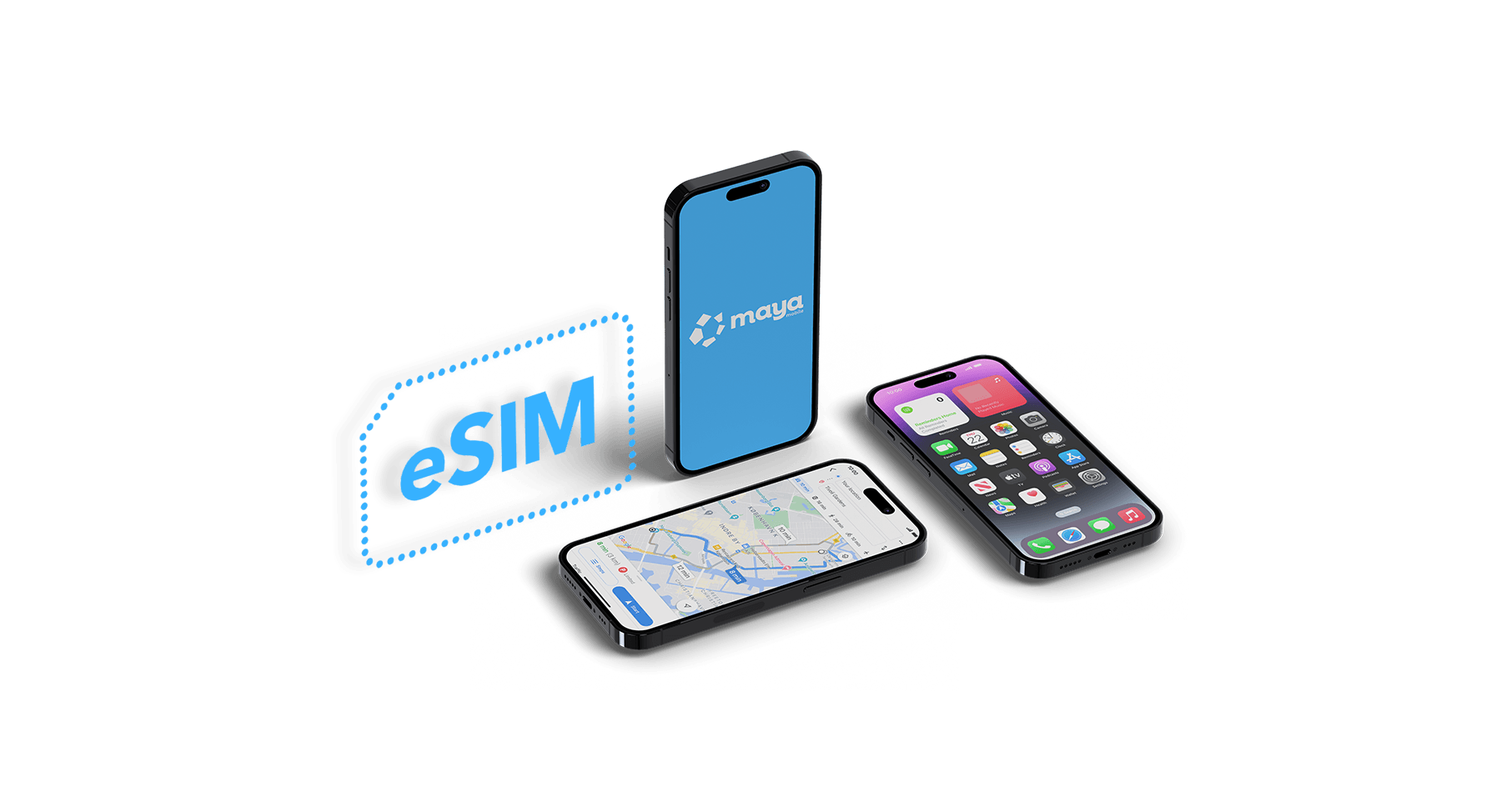
eSIM in IoT: How G+D Is Driving the Future of Connected Devices
The Internet of Things (IoT) is scaling at an unprecedented pace, and at the heart of this revolution sits eSIM technology — a key enabler of secure, flexible, and scalable connectivity for billions of connected devices. Global connectivity providers like Giesecke+Devrient (G+D) are placing eSIM at the center of their innovation strategy, showcasing how it underpins the digital backbone of industries from logistics to smart manufacturing.
This growth isn’t just incremental. According to GSMA Intelligence, the number of IoT connections is projected to surpass 37 billion by 2030, and eSIM adoption is accelerating in lockstep with that expansion. Originally developed for automotive and machine-to-machine (M2M) use cases, eSIM has now moved well beyond cars and industrial systems. It is fast becoming indispensable across all IoT domains, offering the long-term reliability and lifecycle adaptability that modern devices require — from the production line to deployment in remote fields or smart cities.
Against this backdrop, G+D outlines how the latest eSIM innovations — from new standards to factory provisioning — are helping IoT ecosystems keep pace with regulatory, technical, and business demands.
1. SGP.32 Enhances Flexibility
The recently introduced SGP.32 eSIM standard marks a decisive upgrade from the widely deployed SGP.02 specification. While SGP.02 relied heavily on SMS-based communication — a method increasingly outdated in today’s hyperconnected, low-latency IoT world — SGP.32 embraces IP-based protocols. This shift aligns with the broader industry move toward cloud-native, API-driven infrastructures, making connectivity management far more agile.
One practical benefit is simplified profile switching, which helps manufacturers comply with regional roaming regulations or adapt quickly when local operator coverage shifts. Analysts note that as more IoT businesses deploy devices globally, managing compliance at scale becomes a top pain point. By supporting both SGP.32 and legacy SGP.02, enterprises can future-proof their fleets without stranding existing deployments — a strategy already visible in automotive and industrial IoT rollouts.
Trend insight: This move mirrors broader telecom trends — just as 5G Standalone (SA) networks are replacing Non-Standalone (NSA) with cloud-native cores, eSIM standards are evolving from legacy protocols to flexible, internet-based architectures.
2. IFPP Ensures Seamless Connectivity from the Factory
Another breakthrough is In-Factory Profile Provisioning (IFPP), which, alongside Remote SIM Provisioning (RSP), radically streamlines device activation. IFPP allows secure automatic profile loading during manufacturing, which means devices can leave the factory pre-configured — either with a bootstrap profile (to enable remote activation later) or with the final subscription ready to go.
This reduces both manual handling and deployment delays, while RSP ensures that profiles can be updated over-the-air (OTA) throughout the device’s lifetime. For industries with devices operating in remote or hard-to-access locations, this is a game-changer: fleets can be reconfigured to new operators or networks without a single technician setting foot on-site.
Commentary: This approach resonates strongly with the current “zero-touch provisioning” trend in IoT and enterprise IT. Just as companies are moving toward automated device onboarding in the cloud, IFPP extends that philosophy to physical IoT hardware.
3. eSIMs Enable Private 5G Networks
Private 5G is one of the hottest telecom trends right now, with enterprises in manufacturing, ports, airports, and energy sectors racing to deploy dedicated 5G networks. eSIM plays a pivotal enabling role here.
- Hardware resilience: Unlike traditional SIMs, eSIMs avoid problems such as corrosion, vibration damage, or manual swapping, which are especially problematic in heavy industry or outdoor IoT.
- Lifecycle flexibility: eSIM allows devices to connect first to private 5G in the factory and then transition seamlessly to public networks when deployed in the field.
- Coverage optimization: Thanks to SGP.32, profile switching enables operators or enterprises to dynamically adapt if a given area lacks adequate network performance.
Industry comparison: This mirrors how large-scale deployments of industrial robots and AGVs (Automated Guided Vehicles) in factories are leveraging private 5G with eSIM integration to ensure mobility, reliability, and security. It’s also in line with enterprises like Siemens and Bosch building Campus 5G solutions—where eSIM is becoming the de facto enabler.
4. Cellular Networks Deliver Efficient, Secure, and Cost-Effective Connectivity
When compared with Wi-Fi or Bluetooth, cellular networks—and by extension, eSIM-based connectivity—deliver several crucial advantages:
- Security: Cellular is based on globally harmonized standards, while Wi-Fi and Bluetooth vary by region and often face higher vulnerability risks.
- Manageability: Cellular enables centralized, scalable device management, something far harder with heterogeneous Wi-Fi networks.
- Cost efficiency: Although Wi-Fi and Bluetooth appear “free,” cellular can be cost-optimized through time-based connectivity models. G+D’s AirOn360 Intelligent Online exemplifies this: companies can activate connectivity only when needed, reducing recurring data costs without sacrificing reliability.
Commentary: This reflects a wider “cellular-first” trend in IoT, where enterprises prefer LTE-M, NB-IoT, or 5G for mission-critical deployments. In fact, GSMA data shows cellular IoT connections will grow faster than unlicensed spectrum alternatives in the next decade, largely because of the cost/security equation.
5. eSIMs Simplify Product Design and Inventory Management
From a supply chain and hardware design perspective, eSIMs remove friction at multiple levels:
- No need for physical SIM replacement → critical for devices in remote fields, agriculture, or cross-border fleets.
- Streamlined SKUs → one global device model can serve multiple regions by switching profiles, eliminating the complexity of regional variants.
- Reduced BOM costs → no SIM slots, trays, or connectors needed, which is especially important as manufacturers push for smaller, more durable IoT hardware.
Comparison: This aligns with the consumer electronics trend too — think of Apple’s iPhone 14 in the US, which ships eSIM-only. For IoT, the business case is even stronger, as logistical simplicity directly translates into operational savings across large fleets.
“In the IoT sector, eSIM technology will be central to advancing modern connectivity and manufacturing processes. Key advantages include digitalization of workflows, greater efficiency, cost savings, and enhanced security. eSIMs also provide a high degree of flexibility and are network-agnostic, meaning that IoT devices can switch providers multiple times over their lifetime. Users can choose the best operator based on factors such as coverage, quality, required bandwidth, price, or device location. New profiles can then be securely and efficiently provisioned, for example, through G+D’s AirOn360 platform,”
explains Soenke Schroeder, Director Global Go-to-Market Strategy & Innovations for Connectivity & IoT at G+D.
Conclusion
G+D’s focus on SGP.32, IFPP, and OTA lifecycle orchestration puts it in strong alignment with current IoT connectivity needs, but true leadership requires more than technical capability—it requires differentiation in a crowded field.
Where G+D sits in the market:
- Thales and IDEMIA offer GSMA-certified SGP.32 solutions, giving them credibility with enterprise customers who value certification.
- Aeris delivers operator-neutral orchestration at scale, while BICS enables seamless profile switching for regulatory complexity.
- Kigen and chipset firms are pushing the future toward iSIM, embedding connectivity even deeper in hardware.
For G+D, the pathway to sustained leadership lies in demonstrating real-world benefits today—such as mixed-standard fleet management, cost savings via AirOn360, and strong compliance performance—and pairing that with a credible migration strategy toward iSIM.
Notably, Apple’s iPhone Air being eSIM-only globally is more than just a consumer headline—it underscores how eSIM has moved from niche to mainstream. That kind of mass-market embrace reduces enterprise friction, accelerates operator readiness, and further normalizes eSIM as a default choice in device design.
In sum, if G+D can bridge proven eSIM orchestration with a clear path to embedded (iSIM) futures—while demonstrating measurable operational and economic value—it can continue to lead as IoT evolves into private-5G, ultra-embedded ecosystems. But without that clarity and proof, the momentum may shift toward players with more visible certification or stronger operator-neutral platforms.












